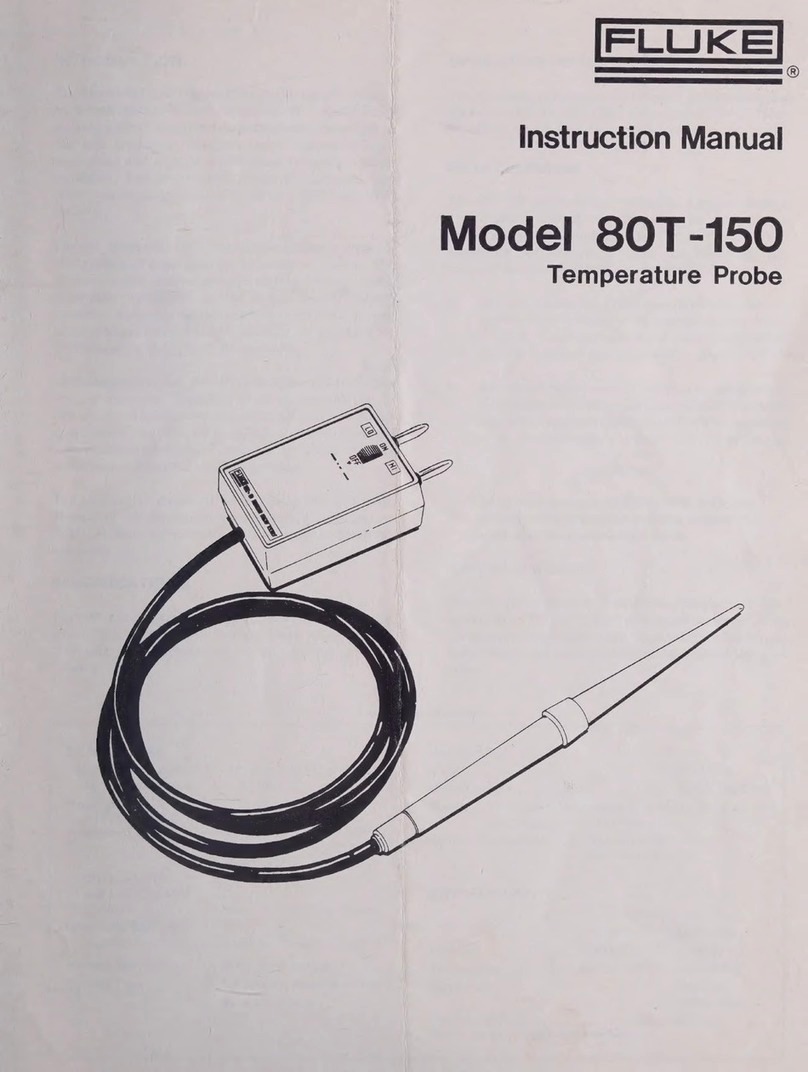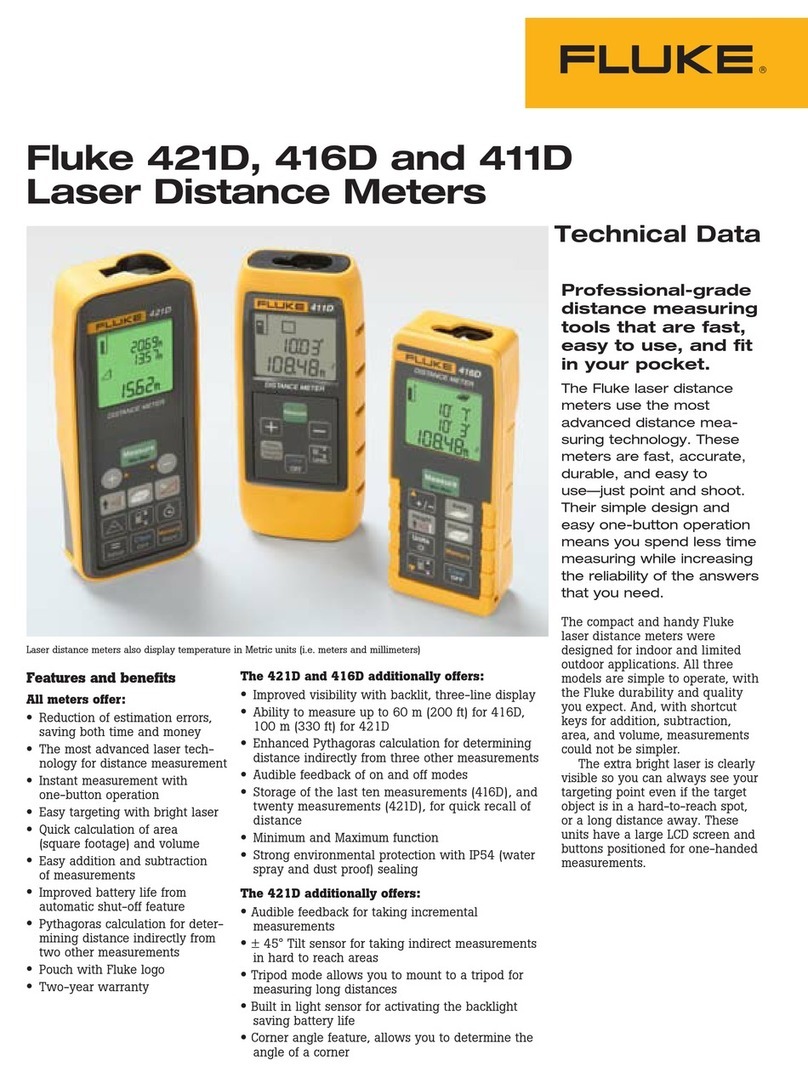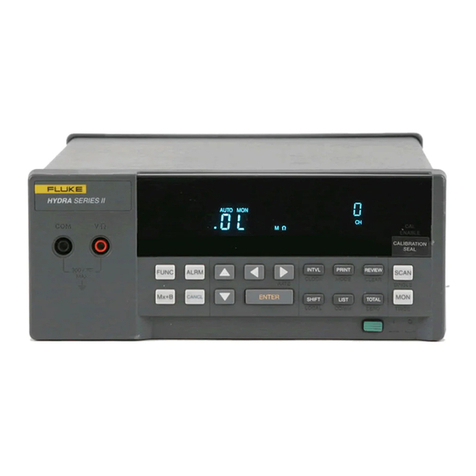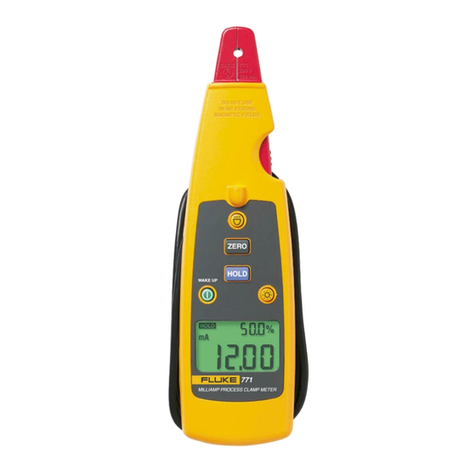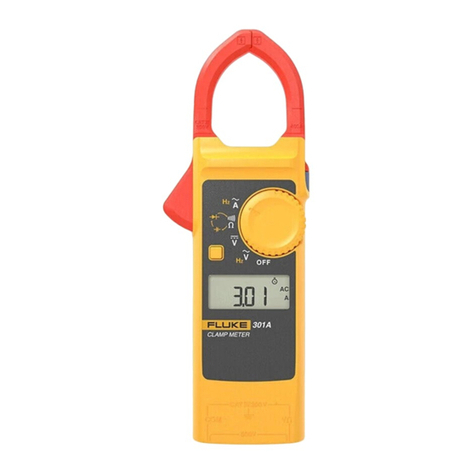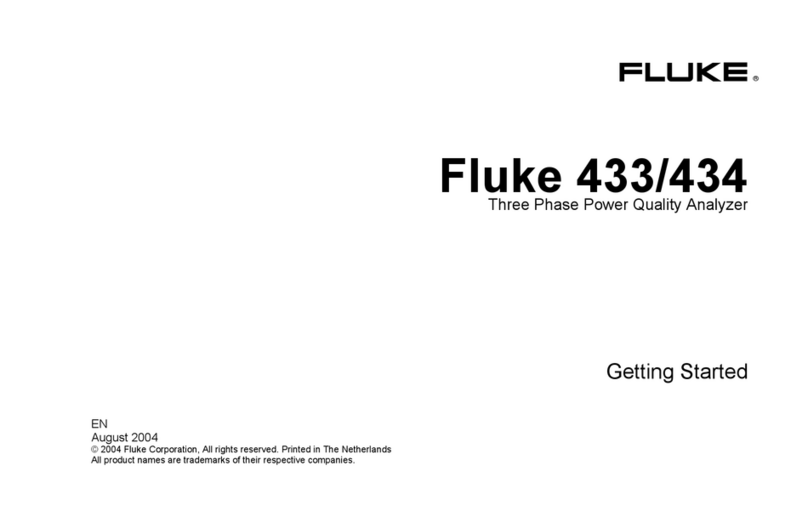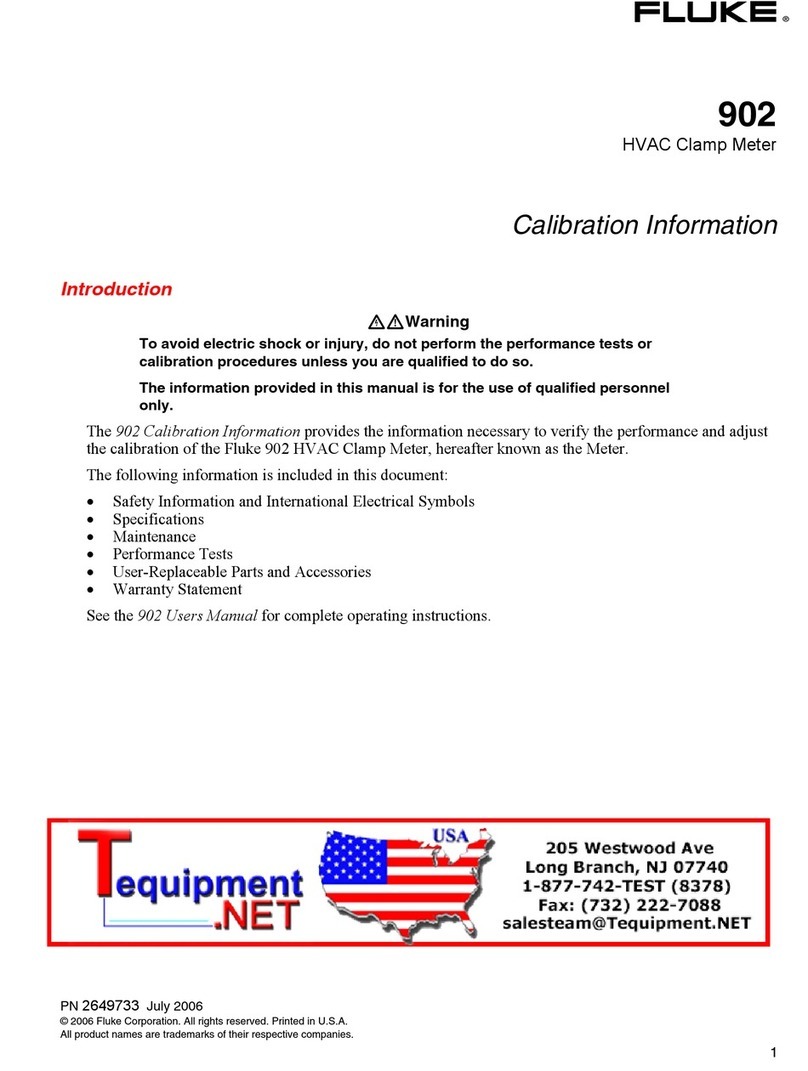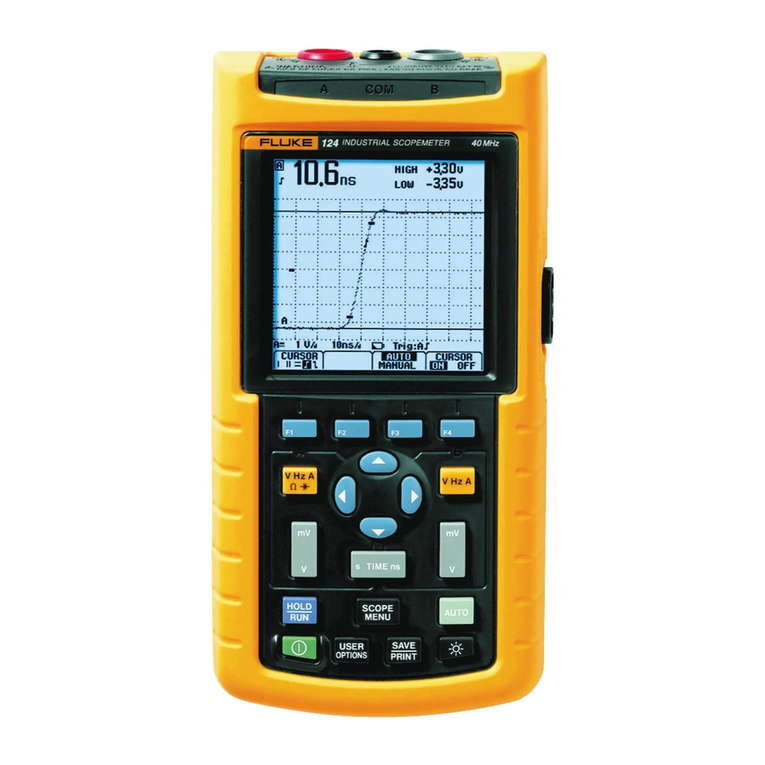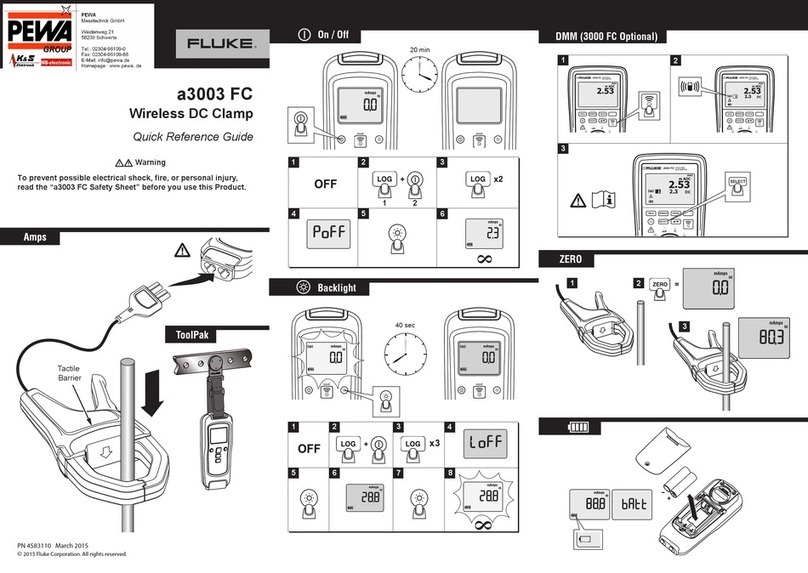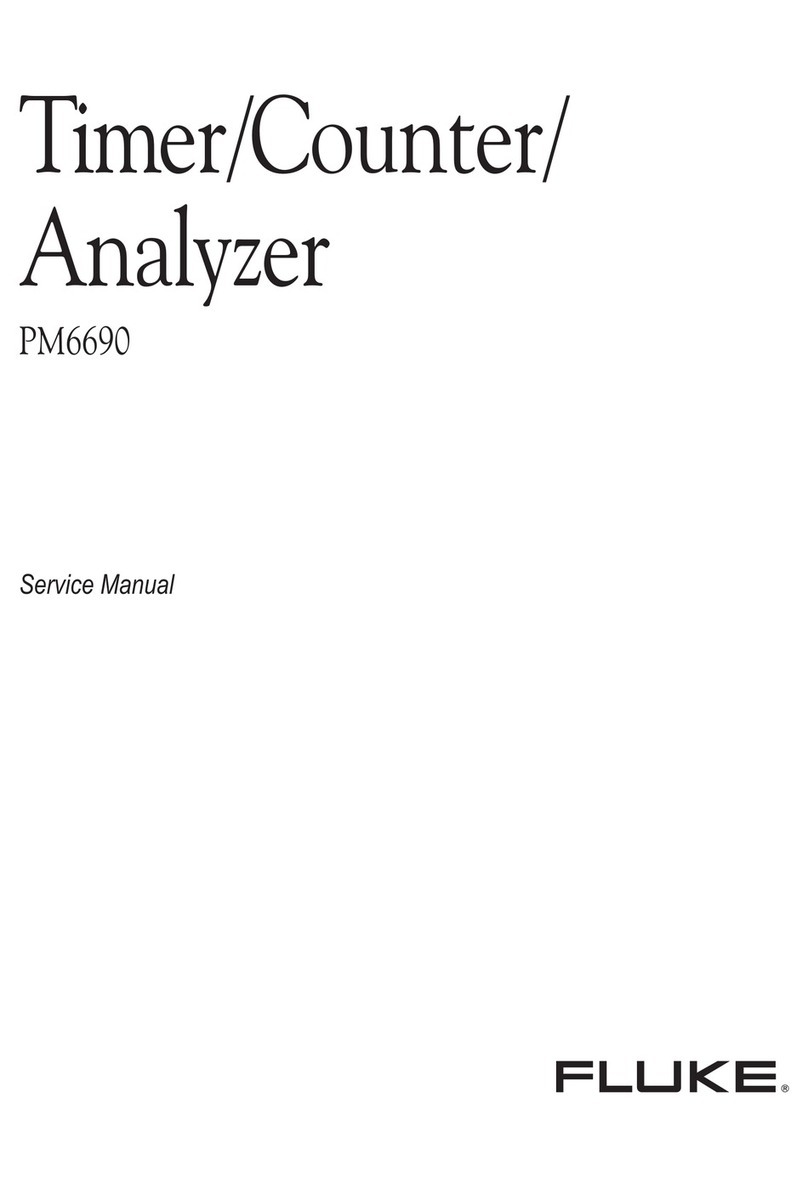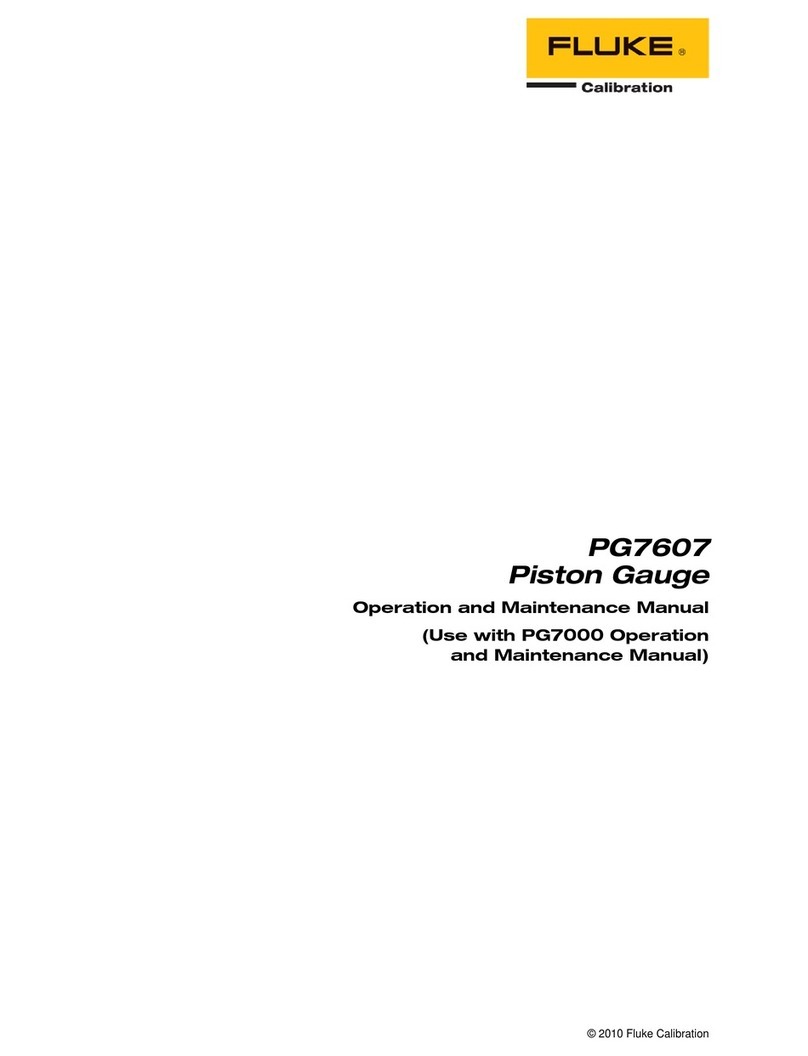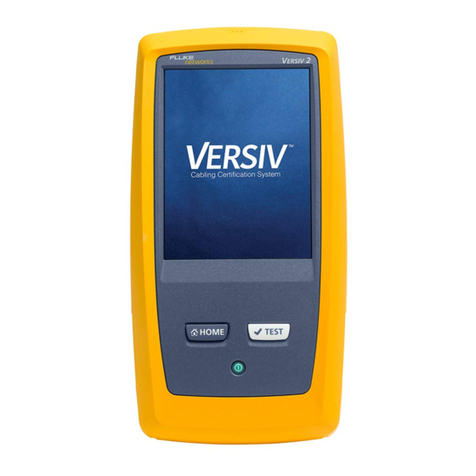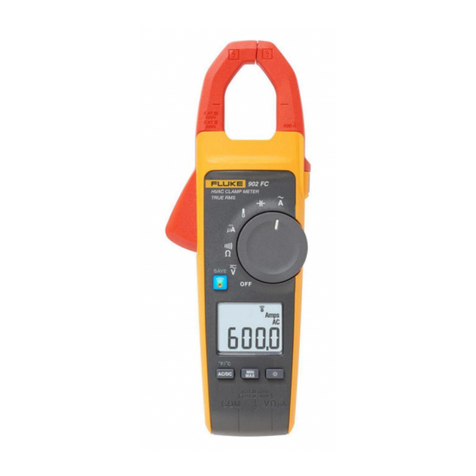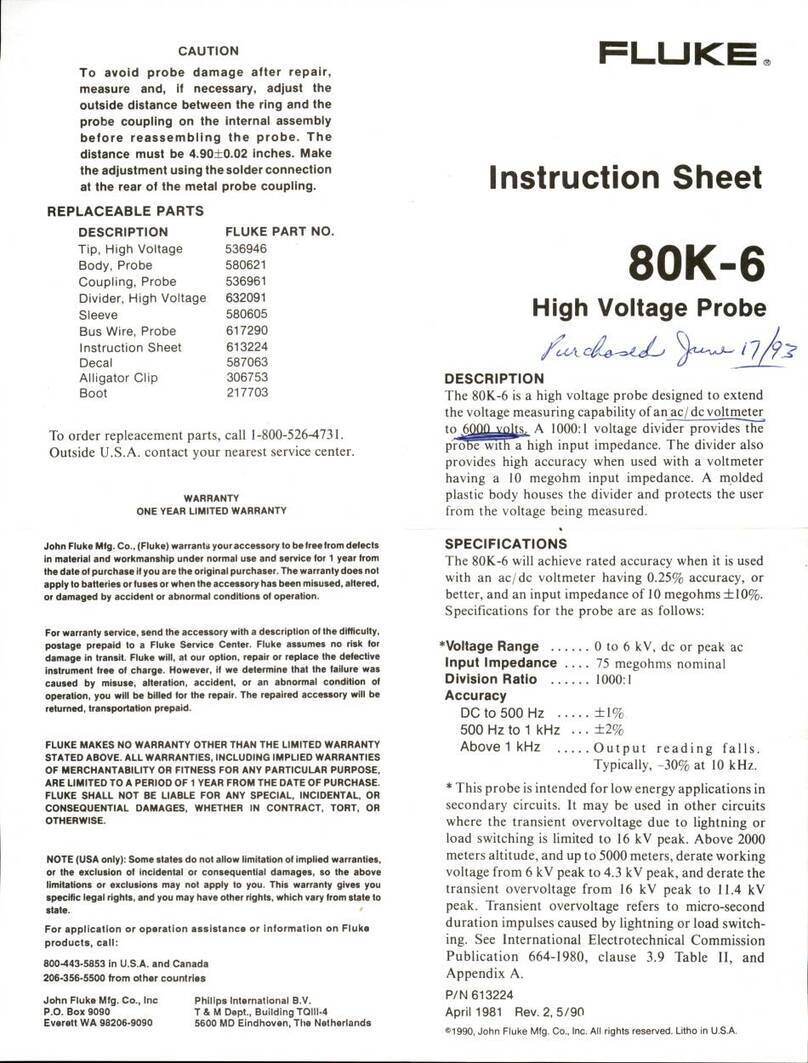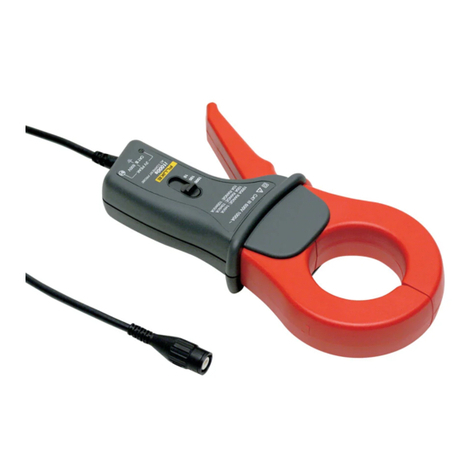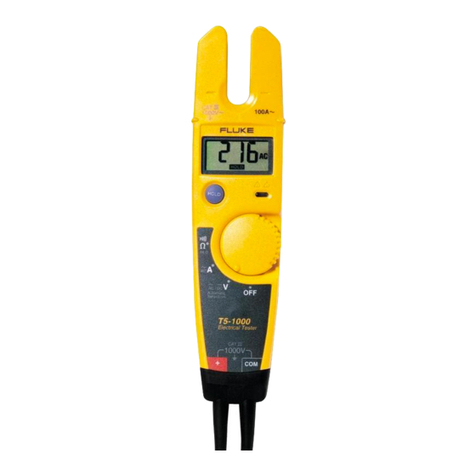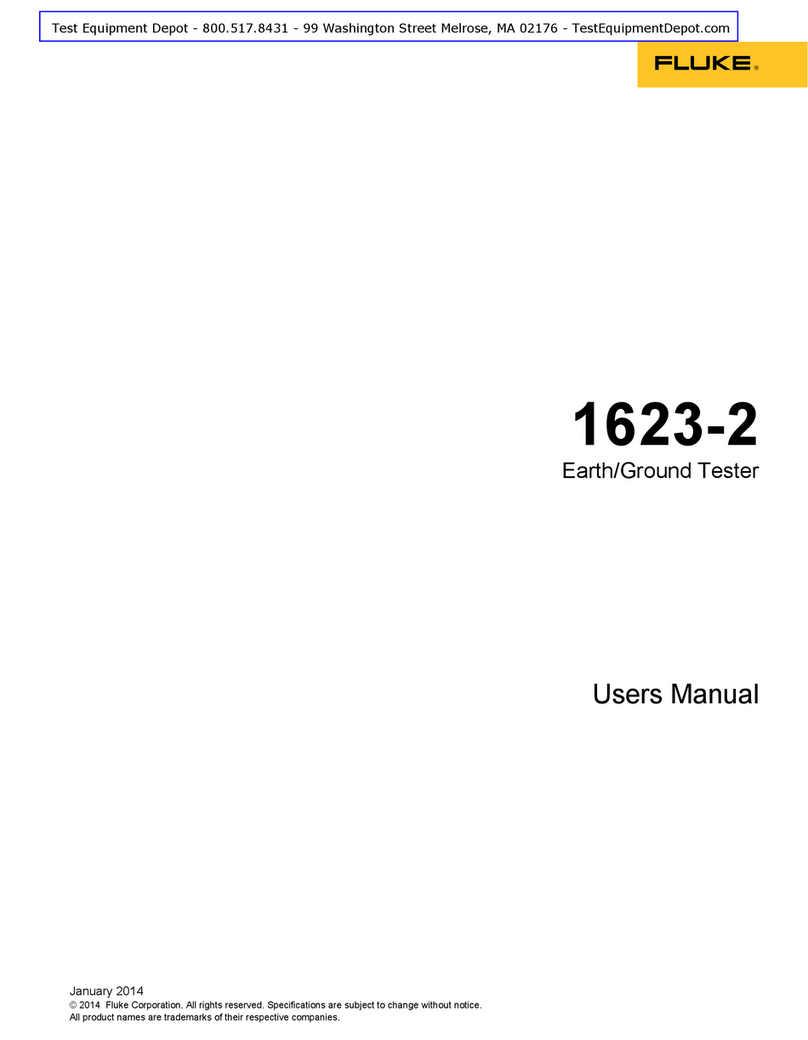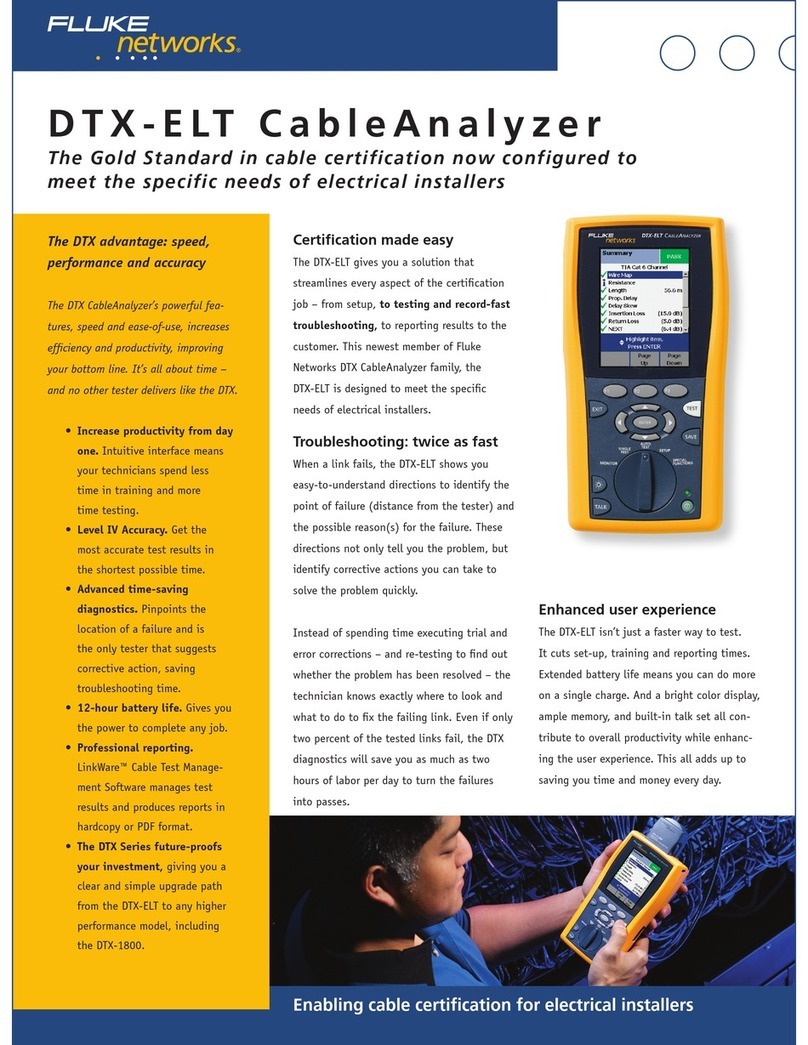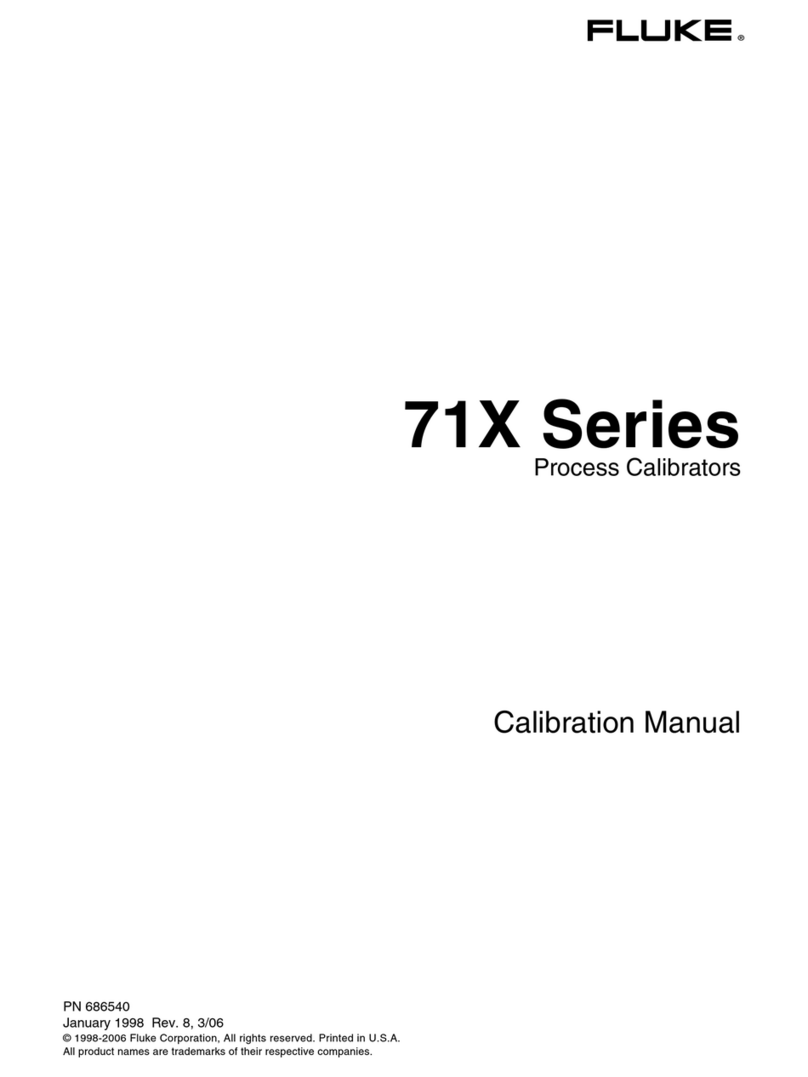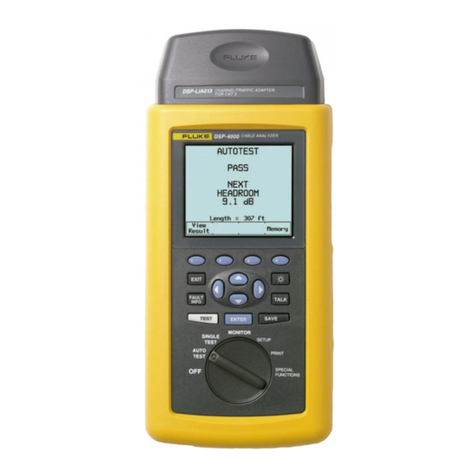
772/773 English Instruction Sheet
Page 8
User Options
Several user options can be activated at Meter power up. Hold N
when powering on the Meter. While holding down N, toggle on/off
each option by repeatedly pressing the following keys:
•Qtoggle on/off backlight auto off. Display shows bLit on or oFF.
•Atoggle on/off spotlight auto off. Display shows SLit on or oFF.
•Htoggle on/off auto power off. Display shows PoFF on or oFF.
When all key are released, the software version appears and the Meter
enters Clamp Measure mode.
Measurement Spotlight LED
The Measurement Spotlight LED helps to quickly find mA signal wires.
Press Ato activate it. To extend battery life, the light automatically turns
off after 2 minutes.
Display HOLD
XW Warning
To avoid electric shock, be aware of the measurement
being taken when using Display HOLD. When Display
HOLD is activated, the display will not change when
different currents are applied.
Press Hto activate Display Hold mode. The display shows Iand
the display freezes. To exit and return to normal operation, press Ha
second time. When in Auto Ramping mode, Hstops ramping.
Auto Ramping the Output
Auto ramping can continuously apply a varying output from the mA
source to a device while your hands remain free to test the response.
When Kis pressed, the Meter produces a repeating 0 % - 100 % -
0 % ramp in a choice of three ramp waveforms:
•() 0 % - 100 % - 0 % 40-second smooth ramp
•() 0 % - 100 % - 0 % 30-second smooth ramp
•() 0 % - 100 % - 0 % 25 % step ramp, 10 seconds each step.
To exit ramping, press any button.
Probe Holder
The Meter is equipped with a probe holder that can either hold a test
probe or can be used to attach the Fluke ToolPak. See Figure 5.
Fjv08.eps
Figure 5. The Probe Holder
